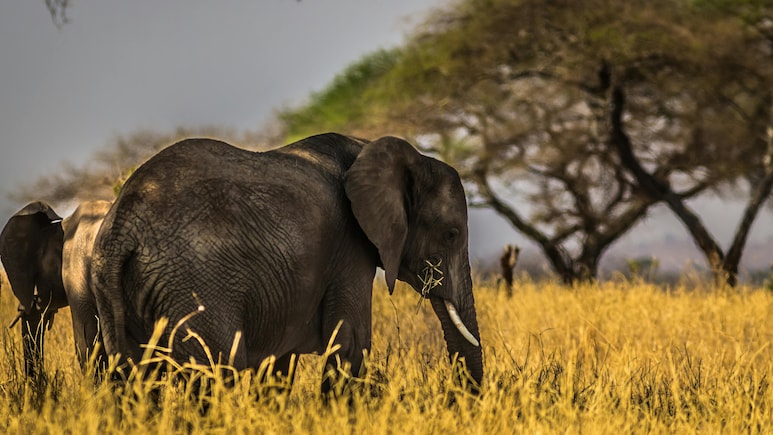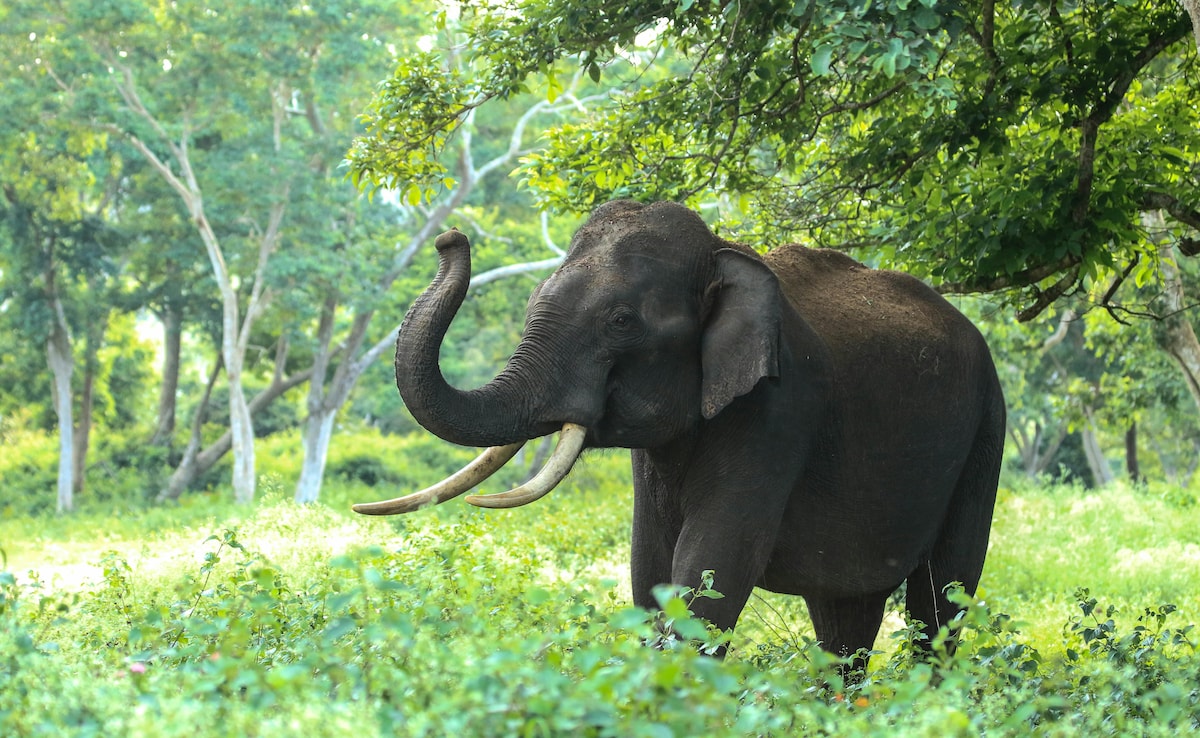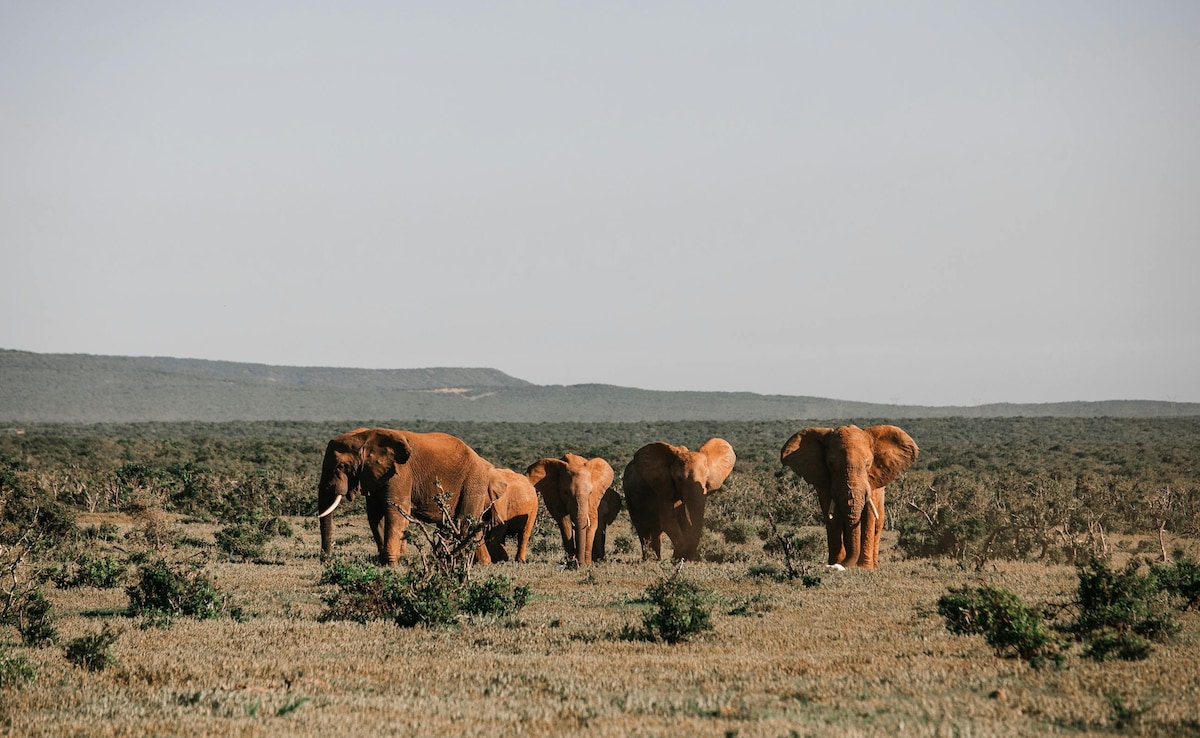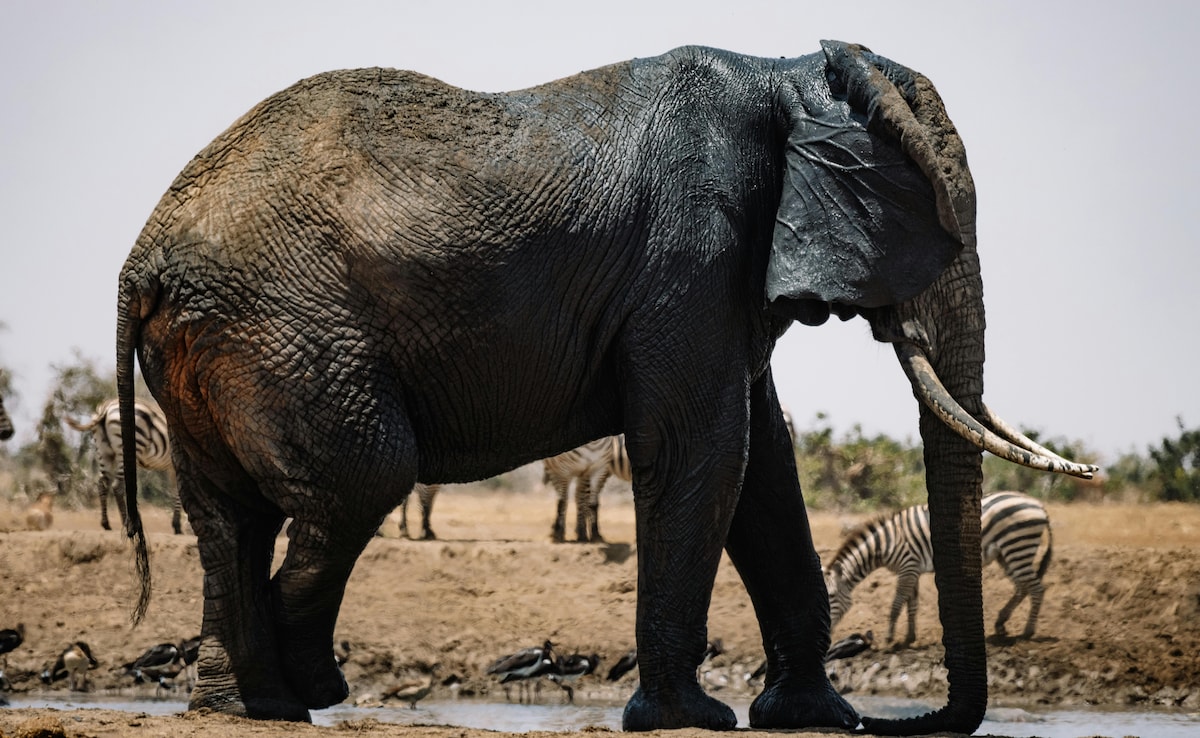
There is something magical about seeing an elephant in the wild. Not in a zoo, not in a camp, but out there, in the forest, where it belongs. The way it walks - slow, steady, and full of quiet power - makes you pause and realise that nature does not hurry, and yet everything gets done. Elephants are wise emotional beings with memories that span decades. Watching them is not just a sighting, it is an experience. On this World Elephant Day, we are not just celebrating elephants, but also the incredible places in India where you can meet them on their terms.
Did you know India is home to nearly 60 percent of the world's Asian elephants? That is over 27,000 wild elephants roaming freely across forests, hills, and riversides. From the misty jungles of Kerala to the lush plains of Assam, India offers some truly unforgettable elephant experiences. But it is not just about spotting them; it is about travelling responsibly, supporting conservation, and respecting the wild. In this feature, we take you through seven of the best places to see elephants in India, how to enjoy your visit, when to go, and what to keep in mind. Ready to walk with these gentle giants?
Also Read: Be It Jim Corbett Or Ranthambore, Why Are India's National Parks Closed During Monsoon Season

Photo Credit: Pexels
Here Are 7 Of The Most Popular Places For Elephant Sighting In India:
1. Bandipur National Park, Karnataka:
Tucked away in the Western Ghats, Bandipur is where elephants walk with quiet confidence through teak forests and open grasslands. Once the hunting grounds of Mysore's royals, it is now a protected haven and part of the Nilgiri Biosphere Reserve.
What to do: Hop on a jeep safari and explore. Early mornings and late afternoons are best for sightings.
Travel tip: Book your safari online in advance. Weekdays are quieter and offer a more peaceful experience.
2. Kaziranga National Park, Assam:
Kaziranga is famous for rhinos, but its elephant population is just as impressive. Here, elephants roam freely across tall grasslands and wetlands, often seen crossing the park's winding trails or grazing near water bodies.
What to do: Go for a jeep safari or try a river cruise on the Brahmaputra for a different view of the park.
Travel tip: Stay near Kohora or Bagori gates for early access to safaris and fewer crowds.
3. Periyar Wildlife Sanctuary, Kerala:
Imagine a calm lake surrounded by thick forest, and a herd of elephants bathing on the banks-that is Periyar for you. Located in Thekkady, this sanctuary offers one of the most serene wildlife experiences in India.
What to do: Take a boat safari on Periyar Lake or join a guided nature walk through the forest.
Travel tip: Mornings are best for sightings. Carry binoculars-you will spot hornbills and other birds too.
4. Mudumalai Tiger Reserve, Tamil Nadu:
Mudumalai is where the Nilgiris come alive. This reserve is a key elephant corridor and a biodiversity hotspot, with dense forests and open meadows.
What to do: Visit Theppakadu Elephant Camp to learn about elephant care, or take a forest safari to spot wild herds.
Travel tip: Combine your trip with Bandipur and Wayanad for a full Nilgiri circuit.
5. Manas National Park, Assam:
A UNESCO World Heritage Site, Manas is wild, beautiful, and less crowded than Kaziranga. Its riverine forests and grasslands are perfect for elephant sightings, especially near the Manas River.
What to do: Jeep safaris and riverbank walks are ideal for spotting elephants and other wildlife.
Travel tip: Stay near Barpeta Road for easy access to the park and local guides.
6. Wayanad Wildlife Sanctuary, Kerala:
Wayanad is all about misty mornings, bamboo forests, and large elephant herds. It is quieter than Periyar and offers a more intimate forest experience.
What to do: Take a safari through the Muthanga or Tholpetty ranges. You might spot elephants crossing the road or feeding in the wild.
Travel tip: Skip the monsoon months. The trails get slippery and sightings drop.
7. Rajaji National Park, Uttarakhand:
Just a short drive from Rishikesh and Haridwar, Rajaji is a hidden gem for elephant lovers. Its mix of forests and riverbeds makes it a great place to see elephants in the Himalayan foothills.
What to do: Jeep safaris through the Chilla and Motichur ranges offer good chances of spotting herds.
Travel tip: Pair your safari with a yoga retreat or river rafting in Rishikesh for a balanced getaway.
Also Read: 5 Most Photogenic National Parks Of India

Photo Credit: Pexels
Best Time To Visit Elephant Reserves In India:
Location | Best Time To Visit | Why |
| Bandipur, Karnataka | October to May | Dry season improves visibility; elephants gather near water sources. |
| Kaziranga, Assam | November to April | Park is closed during monsoon; winter offers clear skies and safaris. |
| Periyar, Kerala | October to March | Pleasant weather; elephants often seen near the lake. |
| Mudumalai, Tamil Nadu | October to May | Dry season is ideal for sightings and photography. |
| Manas, Assam | November to April | Post-monsoon greenery and active wildlife movement. |
| Wayanad, Kerala | October to February | Cooler months with better chances of spotting herds. |
| Rajaji, Uttarakhand | November to June | Park reopens after monsoon; summer sightings near rivers are common. |
Why Responsible Elephant Tourism Matters?
Elephants are intelligent, emotional, and social beings. They form deep family bonds, mourn their dead, and remember kindness-and cruelty-for years. In India, they are not just wildlife; they are part of our culture, mythology, and forests. But tourism, if not done right, can harm them. From overcrowded safaris to unethical camps offering rides and performances, elephants often pay the price for our entertainment.
That is why responsible tourism is so important. When we travel with care, we help protect elephant habitats, support ethical practices, and ensure that future generations can see these gentle giants in the wild-not in chains. It is not just about what we see, but how we choose to see it.
Also Read: 7 Incredible Birds You'll Only Spot In National Parks Of India
6 Tips For Responsible Elephant Tourism In India:
1. Say no to elephant rides:
Rides may seem fun, but they often involve painful training and long hours of labour. Choose places where elephants roam freely and are treated with respect.
2. Observe, do not disturb:
Keep a safe distance. Avoid loud noises, sudden movements, and flash photography. Let the elephants be elephants.
3. Choose ethical operators:
Book safaris and tours through government-run parks or certified eco-tourism agencies. Look for those that support conservation and local communities.
4. Avoid feeding or bathing elephants:
Unless it is part of a regulated, welfare-focused programme (like Theppakadu or Dubare camps), these activities can be stressful and unnatural for the animals.
5. Support conservation efforts:
Donate to or volunteer with organisations working to protect elephant corridors and habitats. Even small contributions help.
6. Travel light and green:
Carry reusable bottles, avoid single-use plastics, and leave no litter behind. Always remember-the forest is home to the animals, not our picnic spot.
Also Read: 10 Popular Safari Destinations In India You Must Visit If You Love Wildlife

Photo Credit: Pexels
Conclusion: Let the Wild Stay Wild
This World Elephant Day, let us walk with giants, not ride them. Let us listen, not disturb. And let us leave the forest better than we found it.
Track Latest News Live on NDTV.com and get news updates from India and around the world

